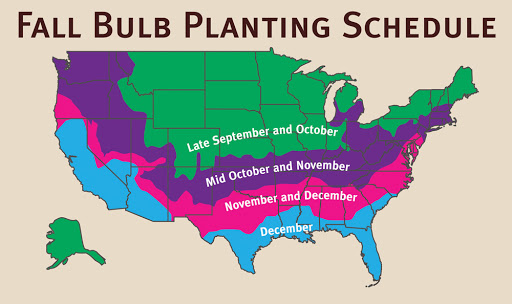We have been purchasing our bulbs from A.D.R. for many years now. As a contractor, the process to order bulbs for many different clients is easy and seamless. The website is a wonderful tool that we refer to quite often for product information, photos, and combination ideas. Our bulbs always arrive on time and wonderfully organized to make our installation much more efficient . The product is top notch and leaves our customers with wanting more and more each season.
Ashley Marrin
, Bret-Mar Landscape
« Previous Plant | Next Plant »
Tulipa Triumph 'Spryng Break'
Tulip
Spryng Break is a Triumph tulip, celebrated for its color-shifting blooms. It starts as white with intense fuchsia-red flames, then matures into predominantly fuchsia-red with variable pink-to-white flames and interior yellow highlights.
This variety blooms in mid-to-late spring, standing on sturdy stems that reach 14 to 22 inches tall. It thrives in full sun with well-drained soil and is prized for its weather resistance and suitability for forcing. A sport of Spryng.
| Description | Price | |||
|---|---|---|---|---|
| Bin Display Box of 100 Bulbs, Size 12+ | $58.30 | |||
Get Notified When Back In StockComplete this form and we'll notify you when SKU BIN6113680 is restocked. | ||||
| Bulk Tray of 500 Bulbs, Size 12+ | $247.50 | |||
Get Notified When Back In StockComplete this form and we'll notify you when SKU BUL14362012 is restocked. | ||||
Tulipa Calculator
When should I plant Tulipa Triumph 'Spryng Break'?

Growing and Maintenance Tips for Tulipa Triumph 'Spryng Break'
Planting: Plant in fall when soil temperatures drop below 55°F. Set bulbs 6–8 inches deep with the pointed end up. Triumph tulips adapt well to borders, containers, and large-scale plantings thanks to their uniform habit and wide color range.
Spacing: Space bulbs 4–6 inches apart. For a cohesive display, plant in groups of 10 or more—ideal for both solid color blocks and curated mixes.
Light: Full sun encourages strong, upright stems and bold color. While light shade is tolerated, performance is best with at least 6 hours of direct light.
Soil: Provide well-drained, neutral to slightly acidic soil (pH 6–7). In poorly drained areas, amend soil or raise beds to prevent bulb rot.
Watering: Water after planting to settle the soil. During spring, water only in extended dry spells—too much moisture can shorten bloom duration.
Temperature & Dormancy: Requires 12–16 weeks of cold (below 50°F) for proper rooting and flower initiation.
Fertilization: Apply a balanced bulb fertilizer when planting and again in spring as foliage emerges to support stem strength and bloom quality.
Pests: Squirrels may dig recently planted bulbs—use mulch or mesh to deter them. Deer will eat buds and foliage, especially in early spring, so apply repellents or fence vulnerable areas.
Disease: To prevent Botrytis (Tulip Fire), plant only healthy bulbs in sunny, airy spots. Avoid overhead watering. Remove and destroy any infected plant material—do not compost. Rotate planting locations yearly and avoid replanting in previously affected sites for three years.





Check back soon for additional details.